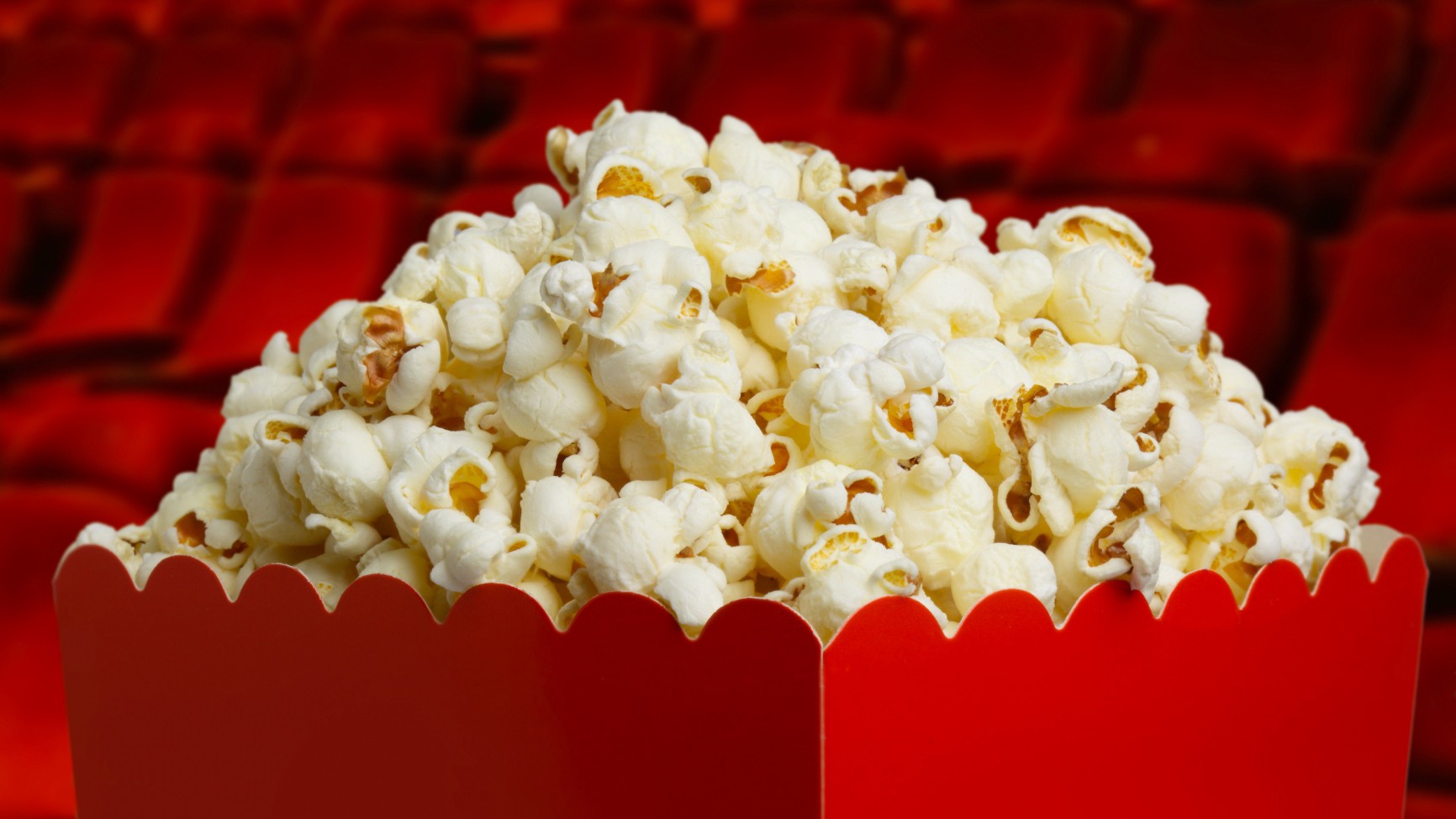Let?s All Go Back to the Lobby
By NATHAN HARTMAN
It?s now common. You go to the movie theater, sit down for a relaxing escape, and two hours later, you realize you?ve another 40 minutes to go.
Maybe you?re watching a fantasy epic, a sci-fi spectacle, or a superhero adventure? Either way, even the most cookie cutter of genre films have been stretched like taffy in Hollywood?s desperate attempt to stuff in as much as possible.

According to Business Insider, films released in 2012 were 1.2 times longer than they were in 1992.
Highest-Grossing Films: 1992
- Aladdin: 90 minutes
- Home Alone 2: 120 minutes
- Batman Returns: 126 minutes
- Lethal Weapon 3: 118 minutes
- A Few Good Men: 138 minutes
AVERAGE: 118.4 minutes
Highest-Grossing Films: 2012
- The Avengers: 143 minutes
- The Dark Knight Rises: 165 minutes
- The Hunger Games: 142 minutes
- Skyfall: 143 minutes
- The Twilight Saga: Breaking Dawn, Part 2: 115 minutes
AVERAGE: 141.6 minutes
In 20 years, Hollywood has added roughly 23 minutes to a film on average. That?s like watching The Second Best Exotic Marigold Hotel (2015) and then tacking on a half-hour of The Big Bang Theory (2007? ).
Critics continually bring up length in their reviews. For example, while Richard Roeper cannot deny the visual majesty of The Hobbit: An Unexpected Journey (2012), he also believes Peter Jackson ?has taken a relatively slim children?s book and stretched it beyond the limits.?
About The Wolf of Wall Street (2013), Scott Tobias quips: ?Spread out over three hours, The Wolf Of Wall Street is an exhausting experience, perhaps too much in tune with one of Belfort?s sleepless, drug-fueled benders.? As well, while enjoyably offbeat, American Hustle (2013) goes on ?way too long,? says the Christian Science Monitor.
Even if we table the matter from an artistic or critical standpoint, we live in a world of YouTube clips, Instagram videos, and six-second Vines. For better or worse, media culture is backpedaling and attention spans are shorter. In fact, Marketplace reports the average attention span for humans in 2000 was 12 seconds. In 2013, that dropped to 8 seconds. Goldfish can hold theirs for 9 seconds.
So, unless you?re swimming in a glass bowl, today?s cinema creates an odd dichotomy: we have longer movies than ever but no attention for them.
How do we fix this?
 Courtesy of Supernatual Wiki.
Courtesy of Supernatual Wiki.
In cinema?s early days, intermissions were necessary to allow projectionists to change out film reels. When the French silent film The Loves of Queen Elizabeth opened in New York in 1912, it consisted of four whole reels and an individual intermission accompanied each.
As time went on, intermissions helped meet other needs. Having a brief break in the picture encouraged patrons to get up and refill their popcorn. This made theaters even more money on concessions, one of their highest areas of income. Who could forget this gem?
For most of the 1950s through 1970s, intermissions marked epics. From Seven Samurai (1954) and It?s a Mad Mad Mad Mad World (1963) to The Sound of Music (1965) and The Godfather (1972), many of cinema?s most remembered films have the intermission in common and, in retrospect, it gives them a somewhat regal flare even when seen in one?s living room. Such breaks are more akin to a live theatre experience, and that association gives such a film?s viewing an event-like quality.
But, as time moved on, pushing extra screenings onto the schedule became more important than popcorn and, with the surge of multi-plexes springing up in every shopping mall, concern grew that such a break gave sneaky sorts the opportunity to jump into another darkened theater.
And so with the passing of 1982’s three-hour biopic Gandhi, the intermission was essentially dissolved in mainstream American cinema.
It?s time for a return.
It?s not as though the concept of the intermission has been killed all over the world. In fact, in India?s thriving Bollywood, it wasn?t until 2011’s Mumbai Diaries that a film was even released there without one.
So why bring back the intermission to America now? Who benefits from a ten-mintue break? In theory, everyone.

Filmmakers and Critics Benefit
If directors or producers know they have two separate blocks to show off their films, we could see a restructuring to how long stories are told.
Beyond that, film critics, who watch films constantly, have less movie-watching fatigue. Suddenly, instead of reviewers complaining the film drug in the third act, they?re reengaged past their popcorn/bathroom break and everyone is happier ? or at least more observant ? for it.
The filmmaker gains the appropriate space to tell her story and a critic?s full bladder doesn?t get in the way of his possible enjoyment and/or criticism.
Movie Theaters Benefit
With concession food still being the biggest income for theaters, regaining that extra opportunity to shill it can only be helpful.
Beyond that, I?m too much of a cynic to believe theaters would allow a film?s composer to score behind an intermission card, so best case scenario, we get a minute of instrumental vamping to bookend eight extra minutes for commercials.
Sure, some could say a Coke ad in the middle of Lawrence of Arabia would kill the mood, but intermission is supposed to be a palate cleanser so, while I hate commercials as much as the next guy, I?d be happier to have a lower ticket price because the theater can make it up in intermission revenue.
Viewers Benefit
As the human?s attention span dwindles, an intermission would not only allow viewers to refresh their snacks, but also their brains. Film overload can be dumped and that mid- or post-film exhaustion about which Aisha Harris complains ? ?it?s not that 170-minute Interstellar (2014) was bad; I was just ready for it to be over? ? would theoretically occur less.
At its basest, intermissions would also allow viewers an opportunity to check in with their smart phones, which they might feel less inclined to whip out during actual films.
On a more positive note, intermission would allow movie lovers a chance to converse and analyze what they?ve seen so far and maybe even gain insight on plot points they?ve missed.
With the rise in binge-watching television, today?s American viewership is attuned to blocks of content with small breaks. So adding intermissions back to the cinema experience may even feel closer to the experience they regularly enjoy at home.
Will we see a return of the intermission to the American cinema? I hope. I don?t see films getting any shorter in the future, and my bladder isn?t getting any bigger.
You give me that ten extra minutes and I just might buy another soda, enjoy the whole movie, and not leave red-eyed and tired after three straight hours of full-sensory immersion. That sounds like a win for everyone.
Images: lobby via Florida Standard, film projector via Whismy of Creation, and popcorn via PixShark.
![]()
If you enjoyed this, please hit the green ?Recommend? button below so others might also enjoy it.
Follow THE OUTTAKE: Medium | Twitter | Facebook
![]()


